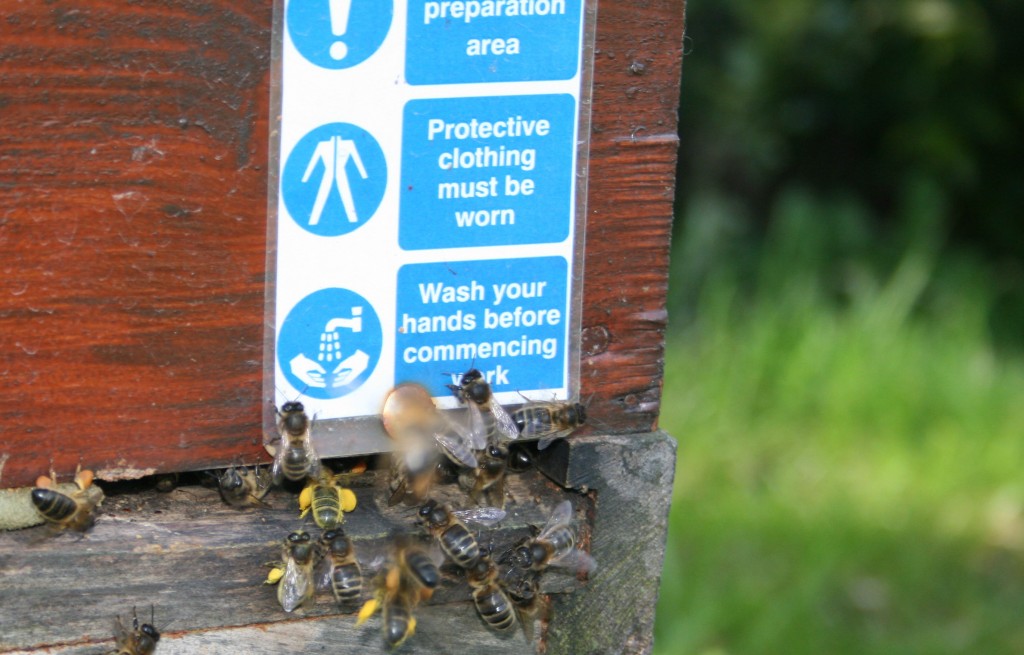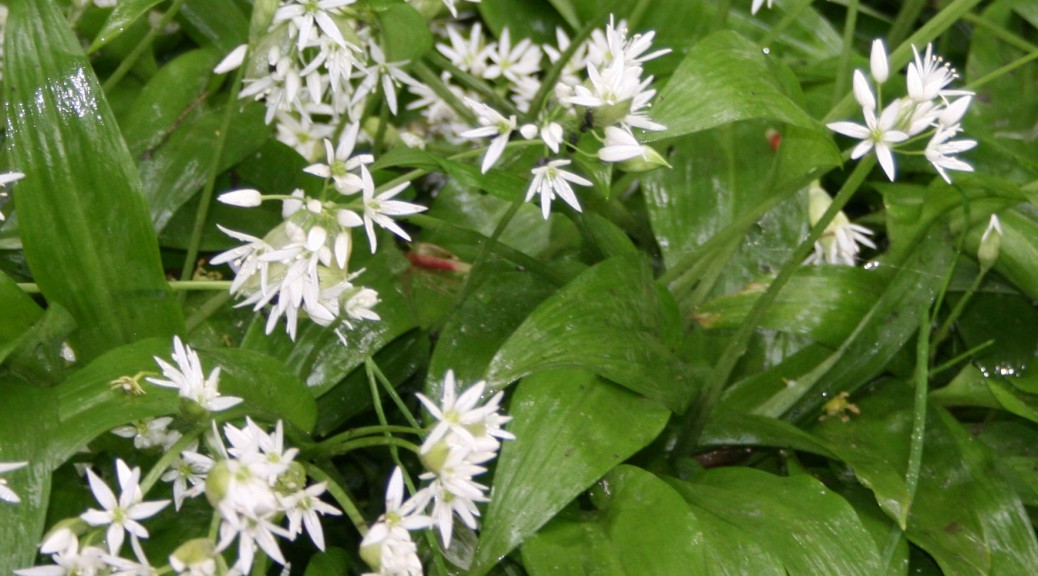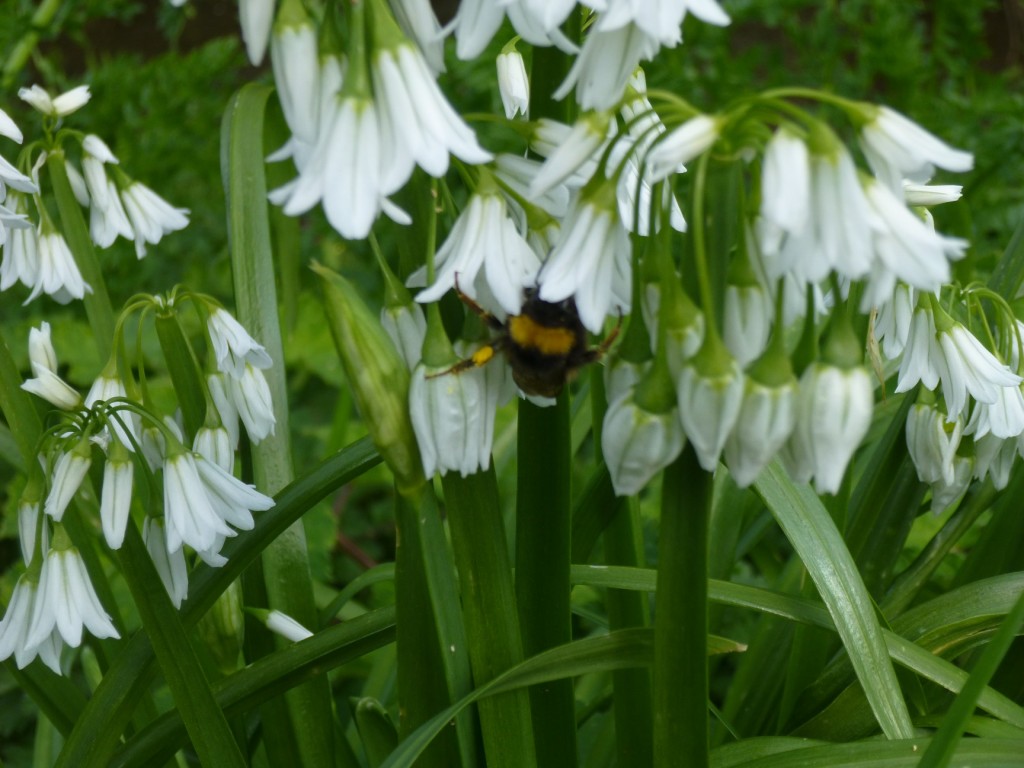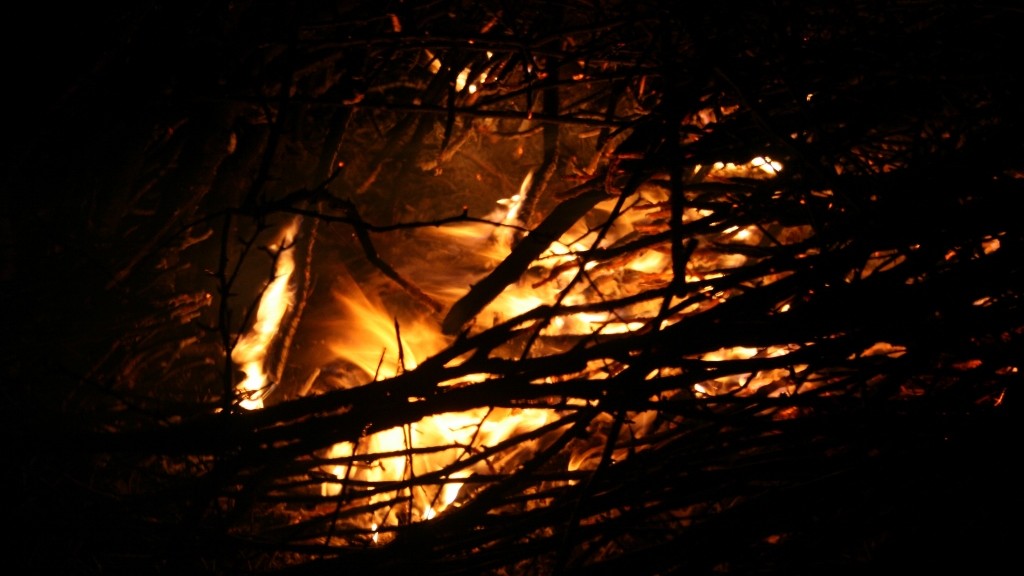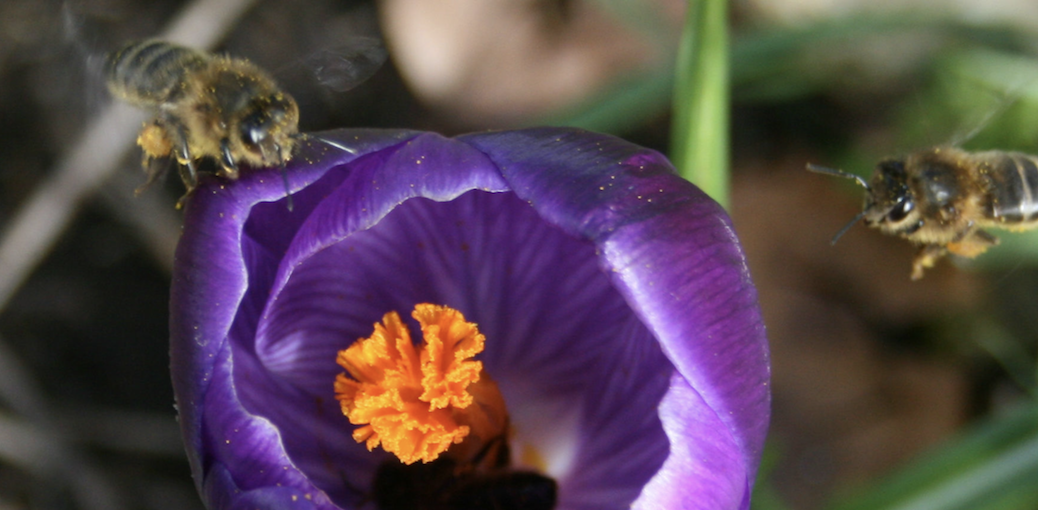Now is the time for spring inspections. In fact the time is nearly gone and if it hadn’t been for Eircom I’d have written about this at the end of March. However, if you haven’t already done so – next time your bees are flying freely you’d better get in there and take a look at them. Continue reading Spring Inspections
Tag Archives: Beginners
Willow Pollen
Lovely sunny day – 14 degrees and slack winds – a perfect day for spring bees looking for pollen.
Here’s a hectic picture of lots of pollen hurtling into the scale hive today.
- The yellow pollen loads are willow.
- The brown pollen loads are gorse.
Click the photo for a better view.
Copyright © Beespoke.info, 2014. All Rights Reserved.
Queen Marking Colours
There are five queen marking colours and they follow an Internationally recognised sequence depending on the last number in the year the queen was born.
The sequence is easily remembered with the following mnemonic ‘Will You Rear Good Bees‘.
- White – years ending 1 or 6
- Yellow – years ending in 2 or 7
- Red – years ending in 3 or 8
- Green – years ending in 4 or 9
- Blue – years ending in 5 or 0
Copyright © Beespoke.info, 2014. All Rights Reserved.
Wild Garlic
Like it or loath it – the wild garlic comes up like a green tide each spring. Personally, I like it. It’s a lovely pungent addition to salads and it makes a great pesto.
There are several species of wild garlic all of which are closely related to the garlic we buy in the shops (Allium sativum). Only 3 members of the garlic family are resident in Ireland, only two are of interest to the bees and only one is a true native but all of them are edible.
- Ramsons or Allium ursinum or ‘Bear garlic’- native Irish plant (see header photo above)
- Three Cornered Leek or Allium triquetrum – probably introduced from Europe 3 hundred years ago (photo below)
The bees visit both species although it’s nothing they’ll ever get a crop from, which is probably just as well.
Pollen loads are yellow as displayed by this very obliging, if slightly fuzzy, bumble bee seen here on some Three Cornered Leek or Allium triquetrum. Click it for a better view.
Copyright © Beespoke.info, 2014. All Rights Reserved.
Winter Losses
It has been a good winter for the bees and there have been very few losses. However, what do you do if you find a hive of your bees has died out?
Well, the first thing to do is find out why they died because whatever killed them could still be lurking in there; if you can pin down the cause of death then you will know what to do with the hive.
Look for the two most obvious things first:
- Starvation
- Poor queen
Much will depend on the time of year they died… Continue reading Winter Losses
Hellebore Pollen
Crocus Bees
Crocuses are only just opening now but should be open every sunny day from now until mid-March. The bees won’t get honey from these but fresh pollen at this time of the year is important as it will give them all a bit of a boost and help get the queen laying. Continue reading Crocus Bees
Nosema Disease
If, like me, you thought Nosema was skittery bees – think again because that’s dysentery. Nosema, or should I say Nosemosis, is something else altogether. Read on. Continue reading Nosema Disease
Acetic Acid Fumigation
If you have old brood frames it is always a good idea to fumigate them before using them again to kill Nosema spores and wax moth. However, be sure they don’t come from a hive where the bees died of AFB. If you aren’t sure, or if frames contain patches of old sealed brood it’s probably best to burn them.
If the wax is old and very black it is best to strip these frames down and add fresh foundation in the spring – you’ll seldom find AFB in nice clean frames. Continue reading Acetic Acid Fumigation
Diseases of Bees – an Overview
Stress and prolonged periods of foul weather can allow some of these diseases such as Nosema or Dysentery to thrive.
Other pests such as Varroa make their presence felt later in the year and of course you can’t treat them while you have honey on board.
Brood diseases won’t be noticed until there is brood so they are always a concern for summer inspections but not to be forgotten in the winter. In fact, if you bring in dead hives in autumn or spring always be on the look out for AFB eg patches of dead brood with sunken cappings and if in doubt – burn.
Bee diseases can be immediately split into two broad categories:
- Diseases of adult bees;
- Diseases of bee brood.
Diseases of adult bees which can arise in this country are as follows – click for information sheet:
Diseases of brood which can arise in this country:
Click here for Shook Swarming and Disease Control
Copyright © Beespoke.info, 2014. All Rights Reserved.
